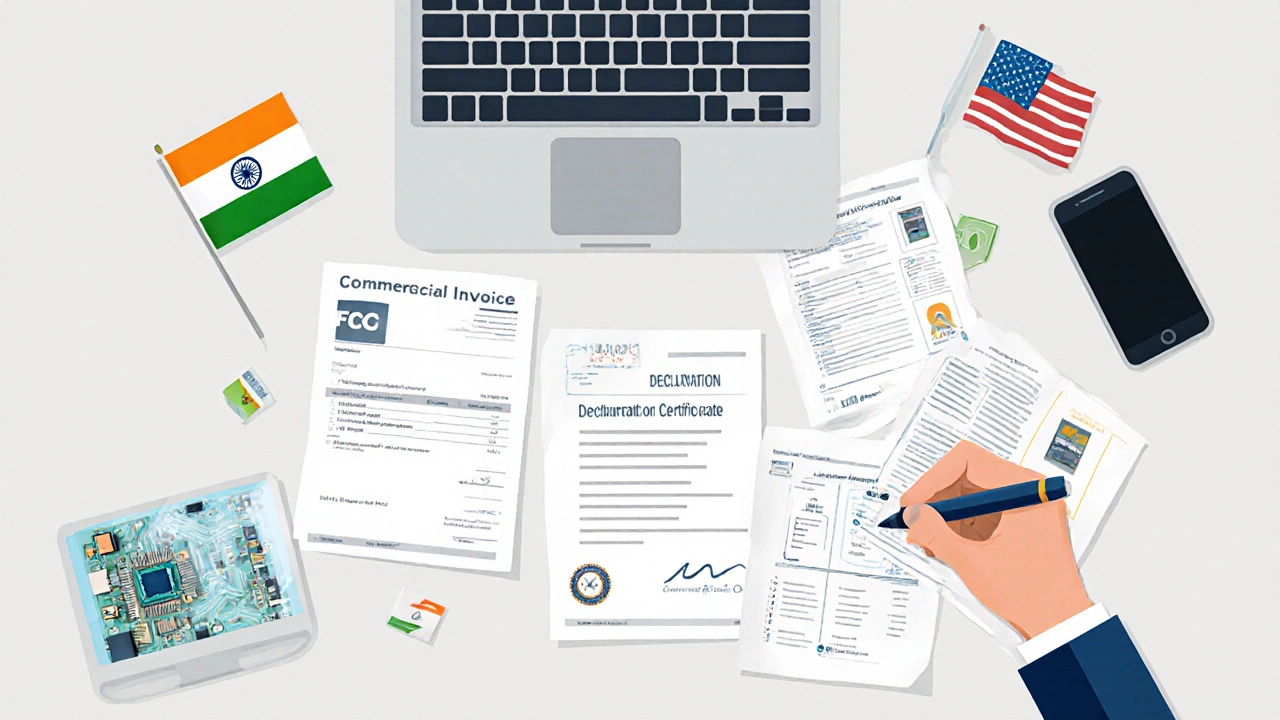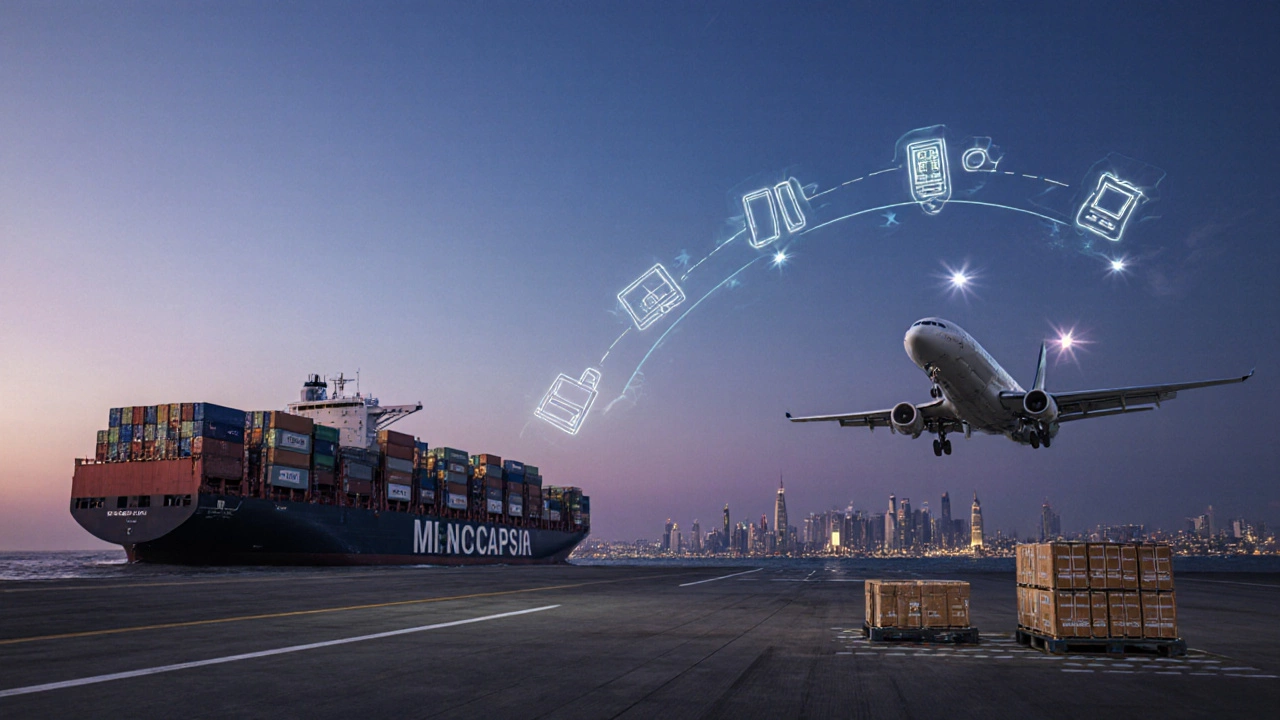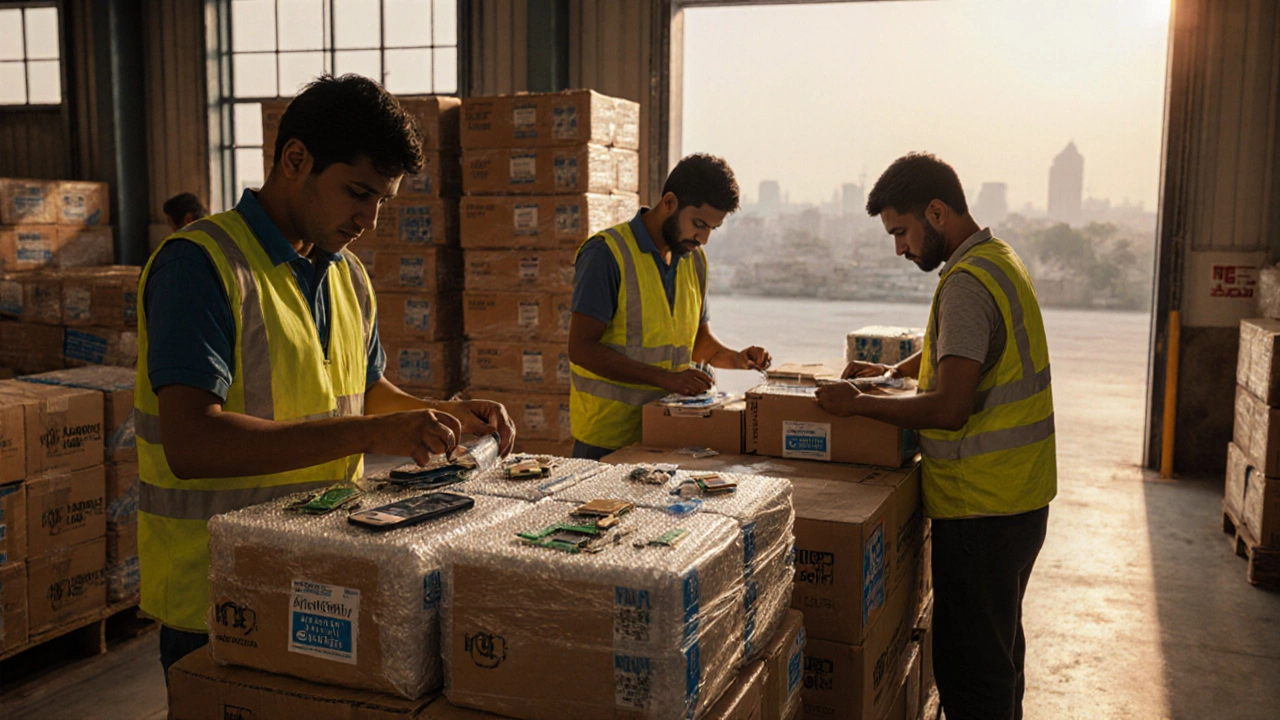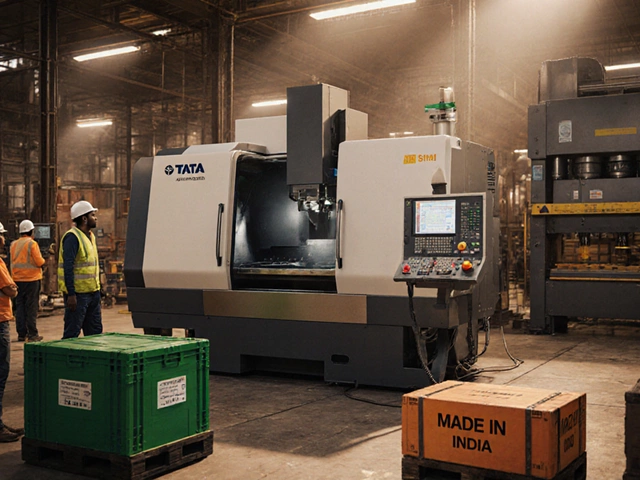Electronics Export Calculator
Enter product details and click "Calculate Shipping & Duty"
Key Takeaways
- Exporting electronics from India to the USA is allowed, but you must comply with both Indian and U.S. regulations.
- Key documents include a commercial invoice, packing list, export licence (if required), and a certified HS code.
- FCC certification and RoHS compliance are mandatory for most consumer electronics entering the U.S. market.
- Air freight is fastest for low‑weight items; sea freight cuts costs for bulk shipments.
- Partnering with an experienced freight forwarder can smooth customs clearance and avoid costly delays.
If you’re wondering whether you can ship electronics India USA, the short answer is yes - but only if you follow the right steps. Below you’ll find a practical roadmap that takes you from the moment you pack the box in Bengaluru to the moment it lands on a dock in Los Angeles.
Understanding the Legal Landscape
Both the Indian government and U.S. authorities control what can cross borders. In India, the Export License is issued by the Directorate General of Foreign Trade (DGFT). Most consumer electronics don’t need a specific licence, but dual‑use items (those that could have military applications) do.
On the U.S. side, the Federal Communications Commission (FCC) enforces electromagnetic compatibility standards. Any device that emits radio frequency, including smartphones, Wi‑Fi routers, and even some toys, must have an FCC ID or be covered under a Declaration of Conformity.
Additionally, the United States follows the RoHS directive, which limits hazardous substances like lead and mercury. Failure to meet RoHS can result in the shipment being held at the border.

Required Documentation & Licensing
Missing a single piece of paperwork can trigger a customs hold that costs you time and money. Here’s the minimum set you need:
- Commercial Invoice - includes buyer and seller details, description of goods, unit price, total value, and country of origin.
- Packing List - itemizes every box, weight, dimensions, and any serial numbers.
- Export License (if applicable) - obtain from DGFT for controlled items.
- Certificate of Origin - often required by U.S. customs to determine duty rates.
- FCC Declaration of Conformity - a PDF that proves the device meets FCC rules.
- RoHS Compliance Statement - typically a supplier‑issued document confirming limits on hazardous substances.
- Bill of Lading (Sea) or Air Waybill (Air) - the carrier’s contract and proof of shipment.
All documents should be in English and attached to the shipment either digitally (for carriers that accept electronic docs) or printed and placed inside the outermost carton.
HS Codes and Duty Calculation
Every product has a Harmonized System (HS) code that determines the tariff rate. For electronics, common codes include:
- 8517.12 - Telephones for cellular networks
- 8528.72 - Monitors and projectors, other than CRT
- 8542.31 - Integrated circuits
Use the HS Code lookup on the U.S. International Trade Commission (USITC) website to confirm the exact 6‑digit code. Once you have it, you can calculate the duty using the formula:
Duty = (Declared Value x Duty Rate) + Merchandise Processing Fee (MPF)
For most consumer electronics, the duty rate ranges from 0% to 2.5%. The MPF is 0.3464% of the value, with a minimum of $27.23 and a maximum of $528.33 per entry (2025 rates).
Choosing a Shipping Method
Your choice depends on cost, speed, and volume. Below is a quick comparison of the three most common options.
| Method | Typical Transit Time | Cost (per kg) | Tracking | Best For |
|---|---|---|---|---|
| Air Freight | 3‑7 days | $6‑$9 | Real‑time, door‑to‑door | High‑value, low‑volume shipments |
| Express Courier (DHL, FedEx) | 2‑4 days | $8‑$12 | Real‑time, door‑to‑door | Small parcels (<30kg) with urgent delivery |
| Sea Freight (FCL/LCL) | 20‑35 days | $1‑$2 | Milestone updates | Bulk shipments, cost‑sensitive |
For a typical 10kg batch of smartphones, air freight will cost around $80‑$90 and get the goods to the U.S. in a week. If you’re moving 500kg of printed circuit board (PCB) panels, sea freight drops the cost to about $1,200‑$1,500 but adds a month to delivery.

Working with a Freight Forwarder
A freight forwarder acts as your logistics partner, handling carrier booking, documentation, and customs clearance. Look for a provider that offers a dedicated customs brokerage team familiar with U.S. electronic imports.
Key services to request:
- Pre‑shipment compliance review (FCC, RoHS, HS code)
- Import duty budgeting and MPF calculation
- Warehouse consolidation in the U.S. for faster last‑mile delivery
- Insurance coverage for high‑value goods
When evaluating forwarders, ask for references from other Indian exporters of similar product categories. Their track record will tell you if they can navigate the U.S. customs system without hiccups.
Common Pitfalls & Compliance Tips
Even seasoned exporters run into trouble. Below are the most frequent issues and how to avoid them:
- Incorrect HS code: Customs will re‑classify the goods, leading to higher duties and possible penalties. Double‑check the code with the USITC.
- Missing FCC documentation: Shipments are often seized at the port of entry. Keep the FCC ID and lab test reports readily available.
- Inadequate packaging: Electronics are fragile. Use anti‑static bubble wrap, sturdy corrugated boxes, and label each box with “Handle with Care”.
- Undervaluing the shipment: This may look like a cost‑saving measure, but it’s considered fraud. Declare the true commercial invoice value.
- Skipping RoHS proof: Even if your components are RoHS‑compliant, you need documentation to prove it. Supplier certificates must be signed and dated.
Pro tip: Run a pre‑clearance audit a week before you ship. A simple checklist can catch missing paperwork and save you from a costly hold.
Frequently Asked Questions
Do I need an export licence to ship smartphones from India?
Generally no. Consumer smartphones are classified as non‑controlled items, so a standard commercial invoice suffices. However, if the device contains dual‑use technology (e.g., advanced GPS), you must obtain a licence from DGFT.
How can I verify the correct HS code for my product?
Use the HS code lookup tool on the U.S. International Trade Commission website. Enter a brief description of the product, and the system will suggest the most appropriate 6‑digit code. Cross‑check with your supplier’s classification to avoid mismatches.
What are the typical customs duties for LED televisions?
LED televisions fall under HS code 8528.72 and attract a duty rate of 0% in the United States. You will still pay the Merchandise Processing Fee (MPF) and possibly a Harbor Maintenance Fee (HMF) if shipped by sea.
Is sea freight safe for delicate electronics?
Yes, provided you use proper packaging and palletization. Moisture‑resistant containers and anti‑static cushioning are essential. Many exporters prefer sea freight for large volumes, but they add a final air leg for last‑mile delivery to protect the goods.
Can a freight forwarder handle FCC compliance for me?
Most reputable forwarders offer a compliance check as part of their service. They will verify that your FCC ID, test reports, and Declaration of Conformity are attached to the shipment. However, the ultimate responsibility remains with the exporter.






